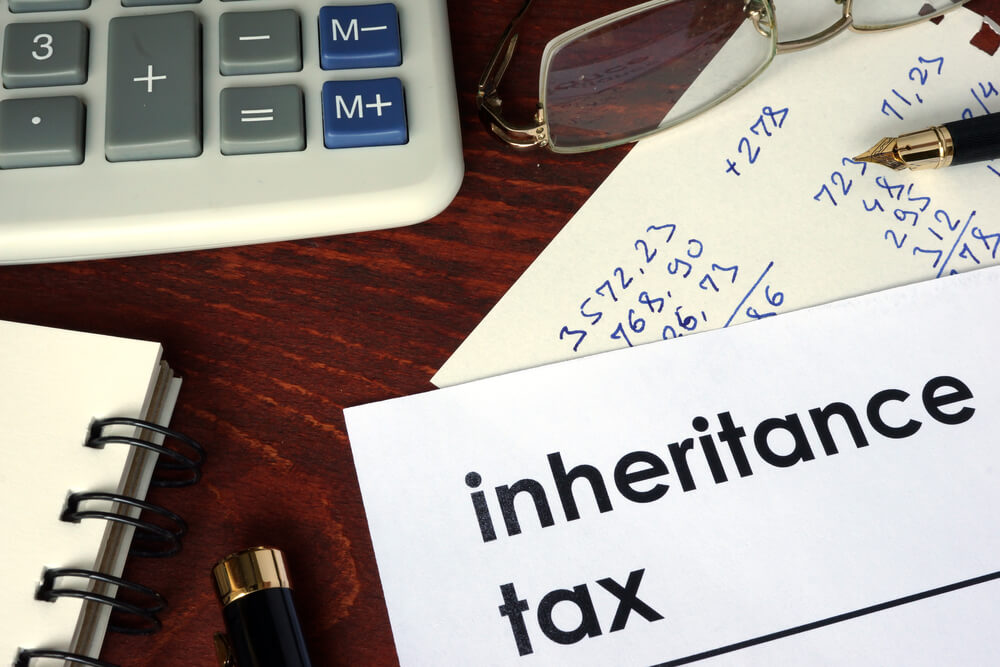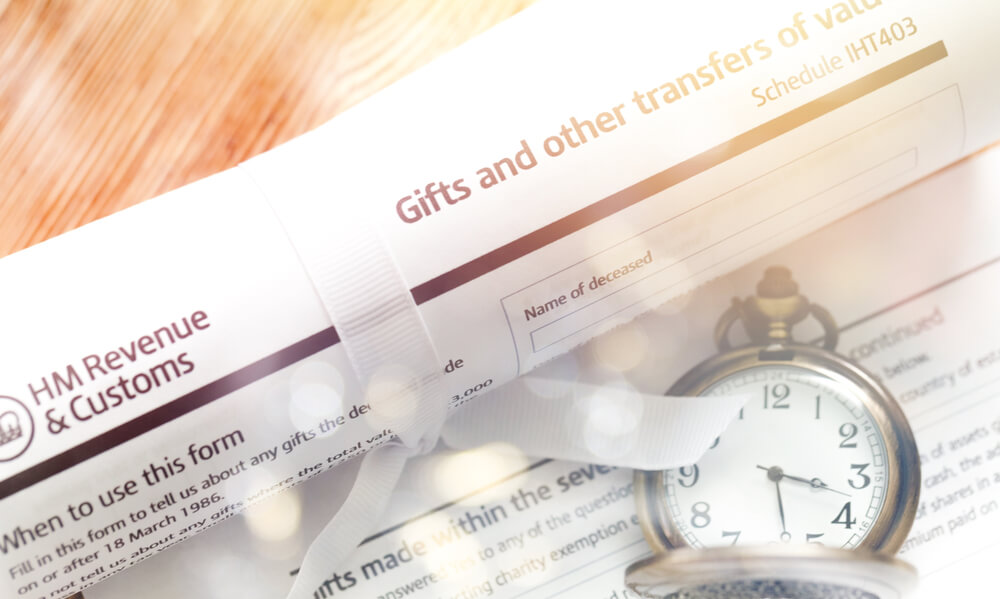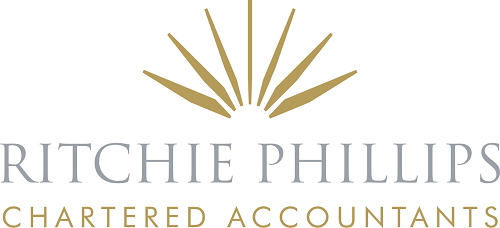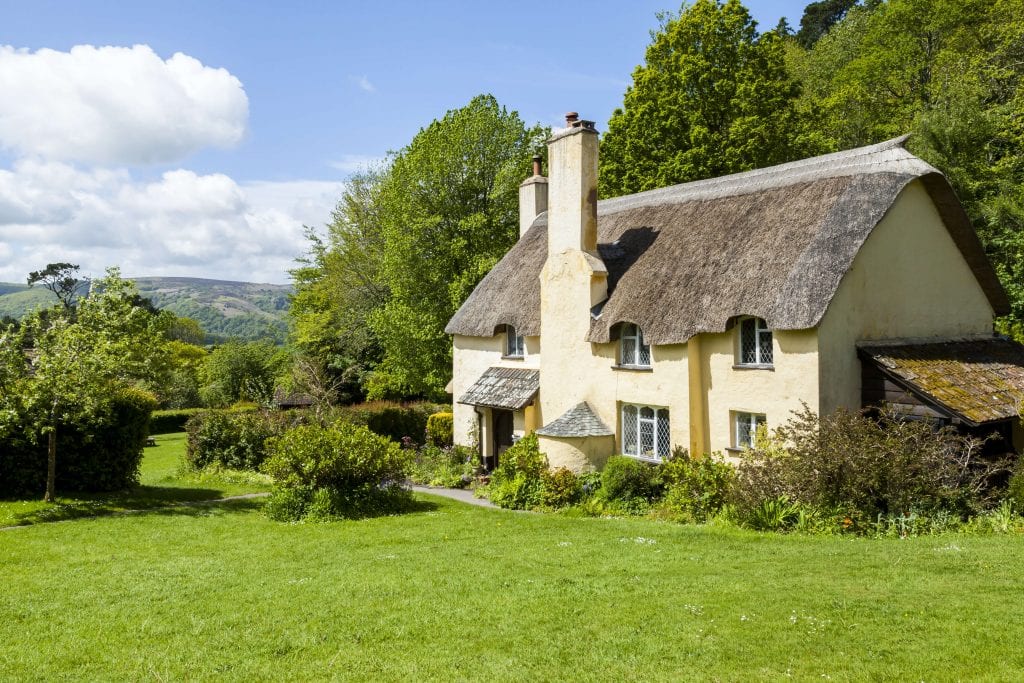Inheritance tax planning is normally considered on a long term basis – both in the context of lifetime giving and the arrangements to be made in your Will, but as we approach the end of the tax year, now is an ideal time to review your plans and financial arrangements.
The key to successful estate planning is to make sure firstly, that your wishes for your estate are properly carried out and secondly, that opportunities to reduce the inheritance tax are fully taken.
If you gift assets, rather than cash, then capital gains tax may be an issue. And of course, when gifting any assets, you should always contemplate the impact on your lifestyle.

Basic planning
There is some straightforward planning all individuals should consider:
- Using the annual gifts exemption of up to £3,000 in a tax year. If you made no gifts in 2018/19, then the exemption for that year is carried forward meaning that you can make gifts of up to £6,000 on or before 5 April 2020 free of inheritance tax.
- Using the small gifts allowance of up to £250 per donee.
- In the case of marriage, gifts of £5,000 to children, £2,500 to grandchildren and great-grandchildren, with £1,000 to anyone else are also exempt.
Normal expenditure out of income
Regular gifts out of excess income can also be exempt from inheritance tax as normal expenditure out of income. You will need good documentation to prove that you made the gifts out of excess income rather than from capital. Importantly, there is no limit to the amount of relief that can be claimed either in lifetime or on death. If you have excess income, it can therefore, be used to fund a discretionary trust with no lifetime change to inheritance tax being payable.
More substantial gifts
Gifting assets or cash during your lifetime will, provided you do not reserve a benefit, fall outside of your inheritance tax estate if you survive seven years, and potentially the amount of inheritance tax payable will reduce under taper relief if you survive more than three years.

The nil rate band
Many estates are now subject to inheritance tax, which is payable if your estate for inheritance tax exceeds the present nil rate band of £325,000, which is frozen at this level to 2020/21.
Transferable nil rate bands
The estate of a surviving spouse or civil partner could benefit from the proportion of the unused nil rate band on the earlier death of their spouse or civil partner, meaning a combined nil rate band of up to £650,000 can be available on the death of the survivor.
Trust arrangements created in lifetime
Proposals for lifetime giving into trust needs careful consideration as most transfers to trusts now attract an immediate charge to inheritance tax unless the property being transferred attracts 100% relief as either business property, agricultural property, or under the relief for normal expenditure out of income.
IHT residence nil rate band
Where a residence is passed on death to direct descendants such as children or grandchildren, an additional nil rate band is available. The band is £150,000 in 2019/20, increasing to £175,000 in 2020/21, and thereafter increasing in line with the Consumer Prices Index in subsequent tax years.
The residence nil rate band can only be used in respect of one residential property which has, at some point, been a residence of the deceased. There is a tapered withdrawal of the residence nil rate band for estates with a net value (after deducting any liabilities but before reliefs and exemptions) of more than £2 million.
The residence nil rate band cannot be greater than the value of the property at the date of death.
Increasing the residence nil rate band for surviving spouses
A surviving spouse may be entitled to an increase in the residence nil rate band if the spouse who died earlier has not used, or was not entitled to use, their full residence nil rate band. The increase applies regardless of when the earlier death took place.
Relief for downsizing
Relief will be available when a person downsizes or ceases to own a home and assets of an equivalent value, up to the value of the residence nil rate band, are passed on death to direct descendants.
Relief for debts and loans
Relief for debts and loans is available against the taxable value of an individual’s estate. Where beneficial, the liability should be secured against taxable assets in your estate.
Care is needed with anti-avoidance provisions which can disallow the deduction. These include the expectation that the loan will be repaid out of the estate unless there are genuine commercial arrangements for the debt or loan to continue.
Loans taken out post 6 April 2013 to purchase assets that qualify for agricultural or business property relief will, regardless of how the loans are secured, be deducted from the value of the property qualifying for agricultural or business property relief.
Discretionary Will Trusts
The emphasis of inheritance tax planning has therefore shifted away from maximising the use of the nil rate band on the first death with consideration instead being given to non-tax issues.
However, there could still be a number of occasions where the first of a married couple or civil partnership to die may wish to establish a discretionary trust in their Will, for example:
- Where there are children from a former marriage.
- There may be a desire to avoid children inheriting assets outright.
- Further inheritance tax savings could be secured using a loan arrangement between the Trustees of the Will Trust and the surviving spouse, if and when funds are needed.
- Investments held by the Discretionary Will Trust may increase in value at a greater rate than the increase in the nil rate band.
Deeds of variation
Deeds of variation can be very effective at reducing inheritance tax liabilities but they can also allow a beneficiary under a Will or intestacy to redirect part or all of the estate they have received to another person.
Married couples and civil partners
Most planning opportunities available to married couples and civil partners do not apply to unmarried couples who are likely to face greater issues over the payment of inheritance tax.
Alternatives to trust arrangements
Consideration is increasingly being given to the use of a Family Limited Partnership or a Family Investment Company where trusts are no longer appropriate given the inheritance tax charges now applying on entry to, every ten years and on exit from trust arrangements.
Legacies to charity
Gifts to charity are exempt from inheritance tax. In addition, where at least 10% of your estate is given to charity, the rate of inheritance tax is reduced from 40% to 36%.

Life assurance
It is usually possible to arrange life assurance written in trust to fund any exposure to inheritance tax.
Valuation
A gift of an asset is an event for both inheritance tax and capital gains tax. Even though inheritance tax may only arise if the donor dies within seven years of the gift, unless the capital gains can be deferred to the donee, there will be capital gains tax on the difference between the open market value and the cost of the asset gifted.
Tax-efficient investments
Some assets qualify for 100% relief from inheritance tax, either as business assets or agricultural assets.
Securing the 100% relief is dependent on owning the asset for at least two years – longer for some agricultural property – before death.
The main classes of assets qualifying for 100% business property relief are:
- Own trading businesses
- Trading partnerships
- Shares in unquoted trading companies
- Shares in AIM listed trading companies
The agricultural value of agricultural property, either farmed in hand where vacant possession can be obtained within two years or held under a Farm Business Tenancy, all qualify for 100% relief from inheritance tax. Arrangements to sell the assets on death can prevent either relief from applying if not carefully structured.
Tax-efficient Wills
Many individuals will still wish to structure their Wills tax efficiently and this will usually involve:
- Specific gifts to individuals, say your children, but not your spouse or civil partner, of assets qualifying for 100% business or agricultural property relief or the balance of the nil-rate band.
- Specific gifts to a discretionary trust, of which the spouse or civil partner can be a beneficiary as well as children, for assets qualifying for 100% business or agricultural property relief (and possibly the balance of the nil rate band).
- Gift of the remainder of the estate either absolutely or on life interest trusts for the surviving spouse or civil partner.
For more information about how we can assist with your estate planning and end of year tax planning, please contact us today.

